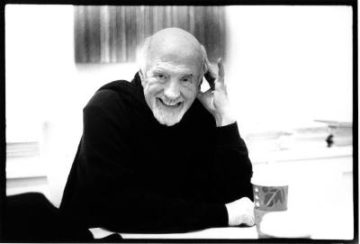Alex Greenberger at ARTnews:
 The Invisible Dragon exemplifies Hickey’s sensibility. It mounts an argument that beauty still mattered at a time when it was viewed as being anathema to relevant art-making, and it does so elegantly and seemingly effortlessly. In one essay, he compares Robert Mapplethorpe’s sexually explicit photography of queer subcultures to Caravaggio’s religious paintings. Using language indebted to art theory of the postwar era, he muses on sleek Mapplethorpe pictures that had been the subject of a culture war in the early ’90s, writing that they “seem so obviously to have come from someplace else, down by the piers, and to have brought with them, into the world of ice-white walls, the aura of knowing smiles, bad habits, rough language, and smoky, crowded rooms with raw brick walls, sawhorse bars and hand-lettered signs on the wall. They may be legitimate, but like my second cousins, Tim and Duane, they are far from respectable, even now.” Such a statement came alongside an honest disclosure: he had first come across these works in a coke dealer’s penthouse.
The Invisible Dragon exemplifies Hickey’s sensibility. It mounts an argument that beauty still mattered at a time when it was viewed as being anathema to relevant art-making, and it does so elegantly and seemingly effortlessly. In one essay, he compares Robert Mapplethorpe’s sexually explicit photography of queer subcultures to Caravaggio’s religious paintings. Using language indebted to art theory of the postwar era, he muses on sleek Mapplethorpe pictures that had been the subject of a culture war in the early ’90s, writing that they “seem so obviously to have come from someplace else, down by the piers, and to have brought with them, into the world of ice-white walls, the aura of knowing smiles, bad habits, rough language, and smoky, crowded rooms with raw brick walls, sawhorse bars and hand-lettered signs on the wall. They may be legitimate, but like my second cousins, Tim and Duane, they are far from respectable, even now.” Such a statement came alongside an honest disclosure: he had first come across these works in a coke dealer’s penthouse.
more here.
